By Leen Randell
Updated: Jul 03, 2024
10 Best Herbal Teas For Eye Twitching
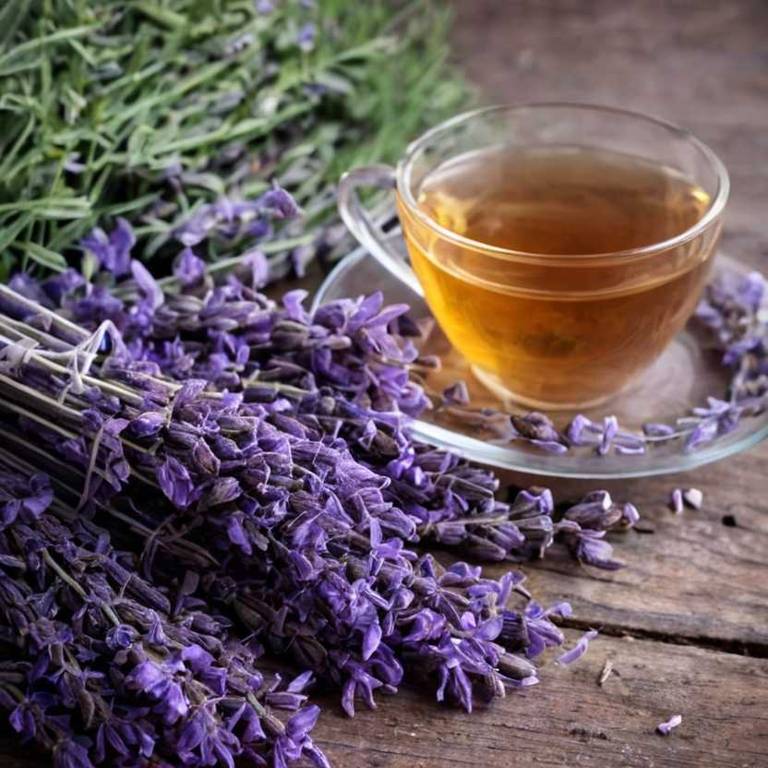
Herbal teas for eye twitching are natural remedies that help alleviate the spasmodic contractions of the eyelid muscles, known as blepharospasm.
These teas typically contain calming and anti-inflammatory properties, which soothe the eye muscles and reduce twitching. Examples of herbal teas that help with eye twitching include chamomile, lavender, and peppermint.
Drinking these teas can improve lives by providing relief from annoying and sometimes painful eye twitches, promoting better sleep, and reducing stress.
The following article describes in detail the most important teas for eye twitching, including medicinal properties, parts of herbs to use, and recipes for preparations.
- 1. Valeriana officinalis
- 2. Passiflora incarnata
- 3. Lavandula angustifolia
- 4. Ginkgo biloba
- 5. Hypericum perforatum
- 6. Tilia cordata
- 7. Achillea millefolium
- 8. Melissa officinalis
- 9. Scutellaria baicalensis
- 10. Oenothera biennis
- What is the best combination of herbal teas to use for eye twitching?
- What ailments similar to eye twitching are treated with herbal teas?
1. Valeriana officinalis
Valeriana officinalis, also known as valerian, teas helps with eye twitching because of its natural sedative and calming properties.
The roots of the valerian plant contain valerenic acid, which has a soothing effect on the nervous system, helping to calm muscle spasms and reduce stress. As eye twitching is often caused by overactive nerves and stress, drinking valerian tea can help to relax the muscles around the eyes, reducing twitching and promoting a sense of calm and relaxation.
This makes valerian tea a popular natural remedy for eye twitching.
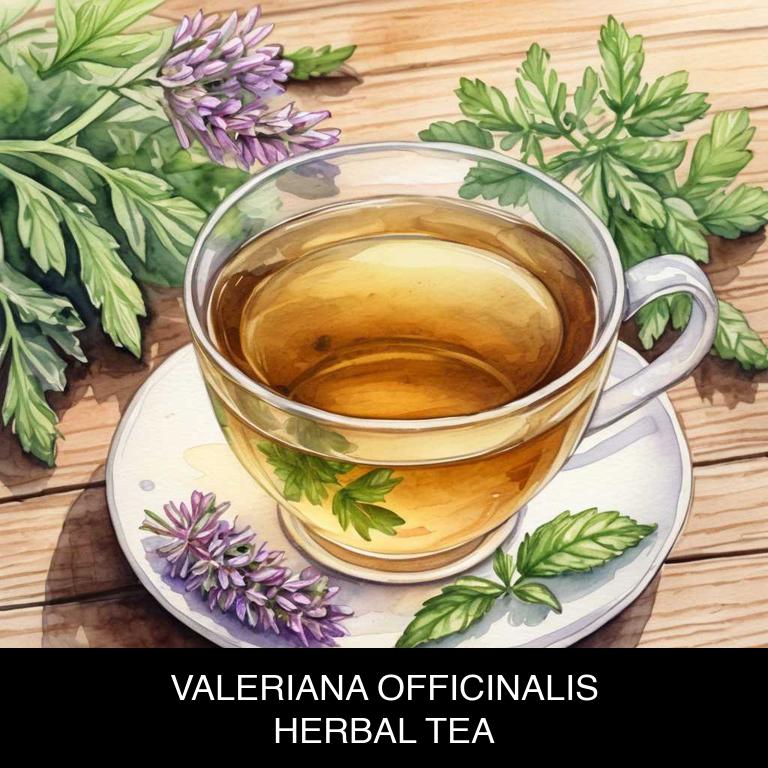
Medicinal Constituents
The list below shows the primary medicinal constituents in Valeriana officinalis teas that help with eye twitching.
- Isovaleric acid: This short-chain fatty acid has a sedative effect, which can help reduce muscle tension and spasms that cause eye twitching.
- Valerenic acid: As a GABA receptor agonist, valerenic acid can help regulate the nervous system and reduce muscle spasms, potentially alleviating eye twitching.
- Valeranone: This sesquiterpene has a sedative and muscle-relaxing effect, which can help reduce eye twitching by calming the nervous system and relaxing the muscles around the eye.
Parts Used
The list below shows the primary parts of valerian used to make teas for eye twitching.
- Roots: They are the primary source of valerenic acid, a compound responsible for the sedative and calming effects that may help alleviate eye twitching.
- Leaves: They contain various flavonoids and phenolic compounds that may contribute to their anti-inflammatory and soothing properties, which can help reduce eye twitching.
- Flowers: They have been traditionally used to promote relaxation and reduce anxiety, which may help alleviate the underlying causes of eye twitching.
Quick Recipe
The following recipe gives a procedure to make a basic valerian for eye twitching.
- Harvest fresh valeriana officinalis roots from a trusted supplier or your own garden in the early morning.
- Wash the roots under cold running water to remove dirt and debris thoroughly.
- Chop the roots into small pieces using a sharp knife or a root cutter to increase surface area.
- Steep one teaspoon of chopped roots in one cup of boiling water for five to ten minutes.
- Strain the tea into a cup using a fine mesh sieve or cheesecloth to remove the solids completely.
2. Passiflora incarnata
Passiflora incarnata, also known as maypop, teas helps with eye twitching because of its natural sedative properties and ability to calm the nervous system.
The active compounds in Passiflora incarnata, such as flavonoids and alkaloids, work to reduce stress and anxiety, which are often underlying causes of eye twitching. Additionally, Passiflora incarnata teas have anti-inflammatory properties, which can help to soothe and relax the muscles around the eyes, providing relief from twitching and spasms.
This makes Passiflora incarnata a popular natural remedy for eye twitching.
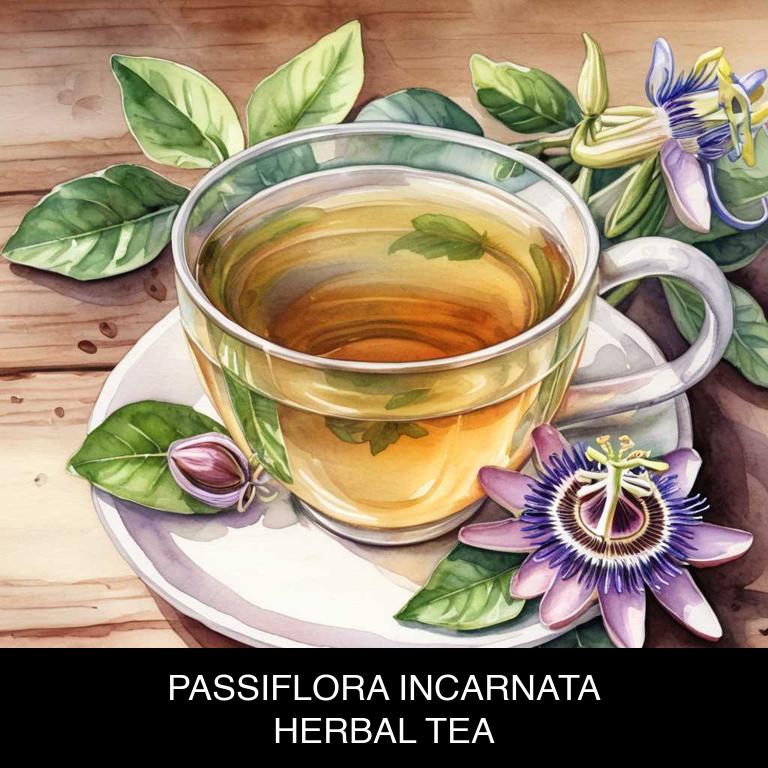
Medicinal Constituents
The list below shows the primary medicinal constituents in Passiflora incarnata teas that help with eye twitching.
- Flavonoids: These plant-derived compounds help reduce inflammation and promote relaxation, which may alleviate eye twitching caused by stress or irritability.
- Harmane alkaloid: This alkaloid has a sedative effect on the nervous system, which might help calm eye twitching caused by nervous anxiety or overstimulation.
- Rotundifuran lignan: This lignan has been shown to have a sedative effect and may help reduce eye twitching caused by nervous tension or stress.
Parts Used
The list below shows the primary parts of maypop used to make teas for eye twitching.
- Leaves: The leaves are used to make teas due to their high content of flavonoids, which help relax muscles and calm the nervous system.
- Stems: The stems are used to make teas because they contain passiflorin, a flavonoid with sedative and anti-anxiety properties that can help alleviate eye twitching.
- Roots: The roots are used to make teas as they are rich in flavonoids and alkaloids that promote relaxation, reduce anxiety, and help soothe eye twitching.
Quick Recipe
The following recipe gives a procedure to make a basic maypop for eye twitching.
- Harvest the passiflora incarnata flowers and leaves when they are fully open and in the morning.
- Dry the fresh plant material in a low temperature oven at 105 degrees fahrenheit for 2 hours.
- Grind the dried plant material into a fine powder using a coffee grinder or mortar and pestle.
- Steep one teaspoon of the powder in a cup of boiling water for 5 to 7 minutes.
- Strain the tea and drink it immediately or store it in the refrigerator for up to 24 hours.
3. Lavandula angustifolia
Lavandula angustifolia, also known as English lavender, teas helps with eye twitching because of its calming and soothing properties.
The tea contains linalool and linalyl acetate, which have a relaxing effect on the body and mind. The calming properties help to reduce stress and anxiety, two common causes of eye twitching. Additionally, the tea's anti-inflammatory properties may help to reduce irritation and inflammation in the eyes, promoting relaxation and reducing the frequency and severity of eye twitches.
This makes Lavandula angustifolia tea a popular remedy for soothing eye twitching.

Medicinal Constituents
The list below shows the primary medicinal constituents in Lavandula angustifolia teas that help with eye twitching.
- Linalool: This terpene has a sedative effect, helping to calm the muscles and reduce spasms that can cause eye twitching.
- Linalyl acetate: As a terpene, linalyl acetate has a relaxing effect on the body, which can help alleviate stress and anxiety that may contribute to eye twitching.
- Apigenin: This flavonoid has a calming effect on the nervous system, helping to reduce anxiety and stress that can lead to muscle spasms and eye twitching.
Parts Used
The list below shows the primary parts of english lavender used to make teas for eye twitching.
- Leaves: Leaves are used due to their calming and soothing properties, which help to ease eye twitching and irritation.
- Flowers: Flowers are used due to their high concentration of essential oils, particularly linalool and linalyl acetate, which have anti-inflammatory and sedative effects.
- Buds: Buds are used due to their ability to help reduce stress and anxiety, which are common causes of eye twitching.
Quick Recipe
The following recipe gives a procedure to make a basic english lavender for eye twitching.
- Harvest 1/4 cup of dried lavandula angustifolia flowers by cutting fresh blooms just as they begin to fade naturally.
- Measure 1 teaspoon of the dried flowers into a tea infuser or a heat-resistant cup.
- Steep the dried flowers in 8 ounces of boiling water for 5-7 minutes to release their oils.
- Strain the tea through a fine-mesh sieve into a cup or teapot to remove the flowers.
- Serve the lavandula angustifolia tea hot or iced within 30 minutes of preparation for optimal flavor.
4. Ginkgo biloba
Ginkgo biloba, also known as maidenhair tree, teas helps with eye twitching because of its potential to improve blood circulation and reduce inflammation in the eyes.
The antioxidants present in Ginkgo biloba may help protect the delicate tissues surrounding the eyes from oxidative stress, while its vasodilatory properties may increase oxygen supply to the retina. By promoting overall eye health, Ginkgo biloba tea may help alleviate eye twitching caused by fatigue, stress, or other factors.
Regular consumption may lead to improved eye comfort and reduced twitching.

Medicinal Constituents
The list below shows the primary medicinal constituents in Ginkgo biloba teas that help with eye twitching.
- Bilobalide: This terpene helps with eye twitching by reducing inflammation and oxidative stress, which are often associated with muscle spasms and twitching in the eye area.
- Quercetin: A flavonoid phenolic compound, quercetin helps alleviate eye twitching by acting as an antioxidant, reducing inflammation, and stabilizing mast cell membranes to prevent histamine release, which can contribute to twitching.
- Ginkgolide b: A triterpenoid compound, ginkgolide B helps with eye twitching by inhibiting platelet-activating factor (PAF), a chemical mediator involved in inflammation and muscle spasms, leading to reduced twitching in the eye area.
Parts Used
The list below shows the primary parts of maidenhair tree used to make teas for eye twitching.
- Leaves: The leaves of Ginkgo biloba are commonly used to make teas due to their high content of flavonoids and terpenoids, which have anti-inflammatory and antioxidant properties that may help alleviate eye twitching.
- Seeds: Ginkgo biloba seeds are also used to make teas, as they contain flavonoids and terpenoids that may help reduce inflammation and improve blood circulation, which may help alleviate eye twitching.
- Roots: Ginkgo biloba roots are sometimes used to make teas, as they are believed to contain compounds that may help reduce inflammation and improve circulation, potentially alleviating eye twitching.
Quick Recipe
The following recipe gives a procedure to make a basic maidenhair tree for eye twitching.
- Gather 1 ounce of dried ginkgo biloba leaves and 2 cups of water for brewing.
- Steep 1 teaspoon of dried ginkgo biloba leaves in 2 cups of boiling water for 5-7 minutes.
- Strain the tea using a fine-mesh sieve or cheesecloth to remove loose leaves.
- Allow the tea to cool to room temperature for 30 minutes before serving.
- Store the brewed tea in an airtight container in the refrigerator for up to 3 days.
5. Hypericum perforatum
Hypericum perforatum, also known as St John's Wort, teas helps with eye twitching because of its antispasmodic properties.
The active compounds in this herb, such as hyperforin and hypericin, have been found to relax muscle spasms and calm nervous system activity, which can contribute to eye twitching. Additionally, its anti-inflammatory properties may help reduce swelling and irritation in the eye area, further alleviating twitching symptoms.
This natural remedy has been used for centuries to soothe various nervous system-related issues, including eye twitching.
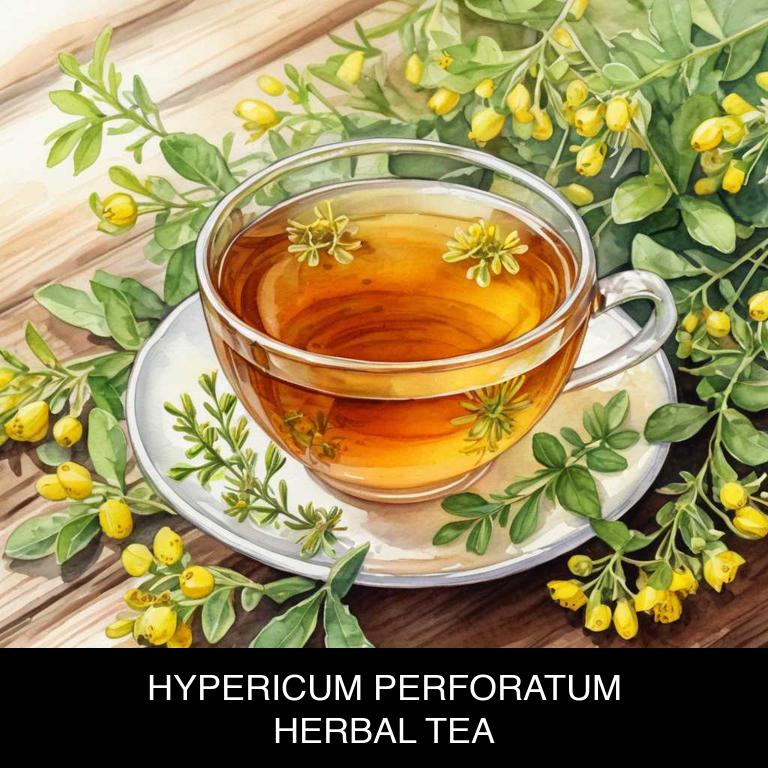
Medicinal Constituents
The list below shows the primary medicinal constituents in Hypericum perforatum teas that help with eye twitching.
- Hyperforin: It is believed to help with eye twitching due to its ability to reduce inflammation and relax muscles, which can help alleviate twitching and spasms in the eye area.
- Flavonoids: Quercetin has anti-inflammatory properties, which can help reduce eye irritation and inflammation that may contribute to eye twitching.
- Kaempferol: It has anti-spasmodic and anti-inflammatory properties, which can help relax the muscles around the eyes and reduce twitching and spasms.
Parts Used
The list below shows the primary parts of st john's wort used to make teas for eye twitching.
- Leaves: The leaves of Hypericum perforatum are often used to make teas as they contain active compounds like hypericin and hyperforin, which may help to reduce eye twitching symptoms.
- Flowers: The flowers of Hypericum perforatum are commonly used to make teas due to their high concentration of flavonoids, which may help to soothe and calm the eyes and surrounding tissues.
- Stems: The stems of Hypericum perforatum are sometimes used to make teas as they contain bioactive compounds that may help to reduce inflammation and alleviate eye twitching symptoms.
Quick Recipe
The following recipe gives a procedure to make a basic st john's wort for eye twitching.
- Harvest hypericum perforatum flowers and leaves in the morning when they are dry and free from dew.
- Dry the harvested plant material in a warm and well-ventilated area for 7 to 10 days.
- Combine 1 to 2 teaspoons of dried hypericum perforatum flowers and leaves with 1 cup of boiling water.
- Steep the mixture for 5 to 10 minutes to allow the active compounds to infuse into the water.
- Strain the tea and discard the solids before serving it hot or cold.
6. Tilia cordata
Tilia cordata, also known as littleleaf linden, teas helps with eye twitching because of its calming and soothing properties.
The flavonoids and volatile oils present in the leaves of this herb have a sedative effect on the nervous system, which can help to relax the muscles around the eyes. This can be particularly beneficial for individuals experiencing eye twitching due to stress or anxiety.
By promoting relaxation and reducing muscle tension, Tilia cordata tea may help to alleviate eye twitching and promote overall eye health.
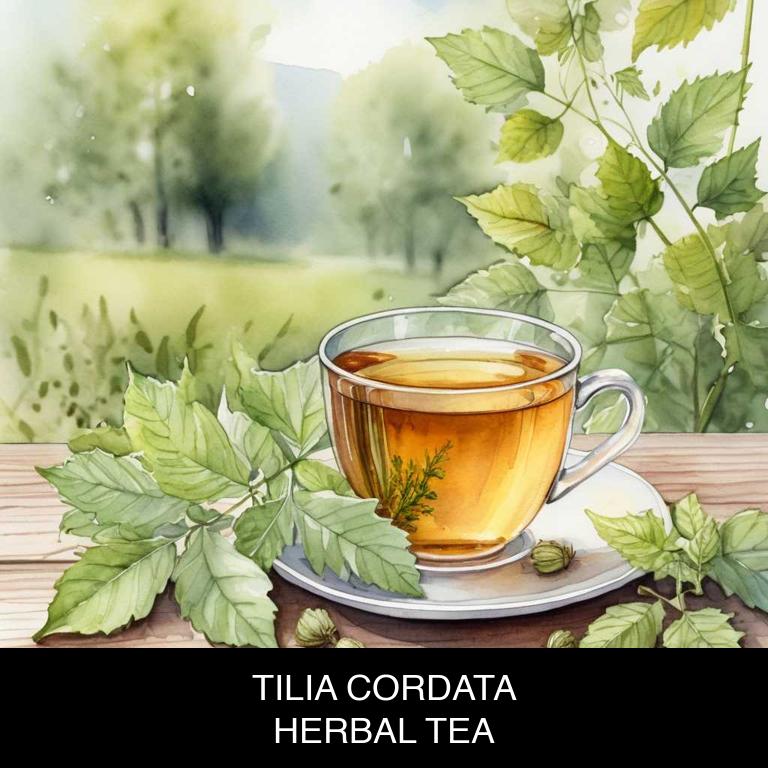
Medicinal Constituents
The list below shows the primary medicinal constituents in Tilia cordata teas that help with eye twitching.
- Flavonoids: These compounds, particularly quercetin, may help alleviate eye twitching by reducing inflammation and oxidative stress in the nerves and blood vessels surrounding the eyes.
- Rosmarinic acid: This antioxidant may help to relax the muscles around the eyes, reduce spasms, and soothe irritation that can contribute to eye twitching.
- Tannins: These astringent compounds may help to calm the nervous system, reduce anxiety and stress that can lead to eye twitching, and promote relaxation of the muscles around the eyes.
Parts Used
The list below shows the primary parts of littleleaf linden used to make teas for eye twitching.
- Leaves: Tilia cordata leaves are used to make teas for eye twitching due to their potential calming and soothing effects on the eyes and nervous system.
- Flowers: Tilia cordata flowers are used to make teas for eye twitching due to their potential to reduce inflammation and promote relaxation.
- Roots: Tilia cordata roots are used to make teas for eye twitching due to their potential to calm the nervous system and reduce eye strain.
Quick Recipe
The following recipe gives a procedure to make a basic littleleaf linden for eye twitching.
- Gather 2 tablespoons of dried tilia cordata leaves and flowers for a standard serving size.
- Steep the tilia cordata leaves and flowers in 1 cup of boiling water for 5 to 7 minutes.
- Strain the herbal infusion through a fine-mesh sieve or cheesecloth into a heat-resistant cup.
- Add honey to taste if desired and stir to combine with the herbal infusion immediately.
- Allow the herbal tea to cool completely to room temperature before serving and storing.
7. Achillea millefolium
Achillea millefolium, also known as yarrow, teas helps with eye twitching because of its ability to calm the nervous system and reduce inflammation.
The herb contains flavonoids and sesquiterpene lactones, which have antioxidant and anti-inflammatory properties that can help soothe the muscles and nerves around the eyes, leading to a reduction in twitching and spasms.
Additionally, Achillea millefolium has a mild sedative effect, which can help relax the body and mind, providing relief from eye twitching and other related symptoms.
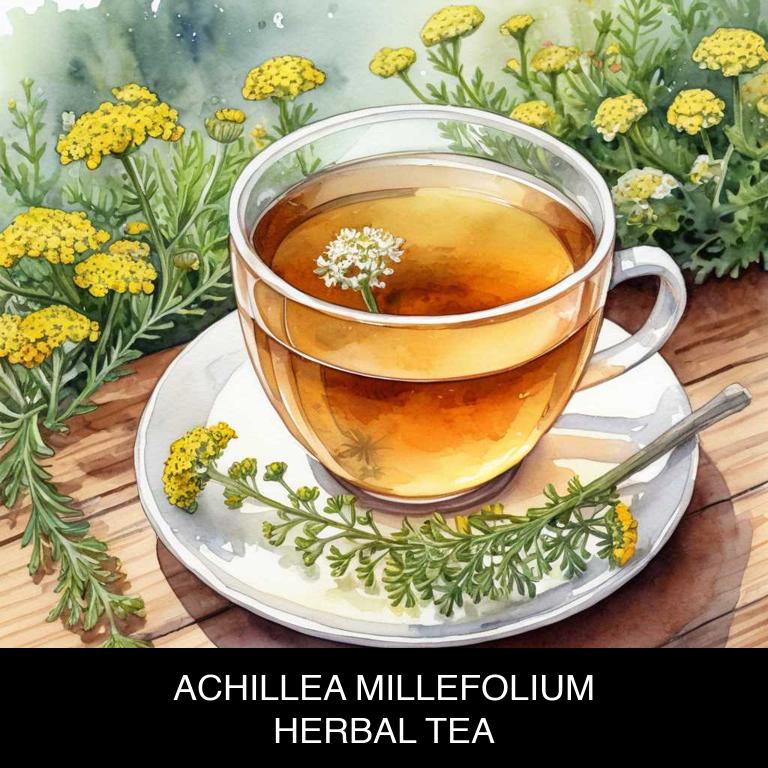
Medicinal Constituents
The list below shows the primary medicinal constituents in Achillea millefolium teas that help with eye twitching.
- Apigenin: A flavonoid that has anti-inflammatory and anxiolytic properties, which can help reduce stress and anxiety-related eye twitching.
- Luteolin: A flavonoid that has anti-inflammatory and antioxidant properties, which can help reduce inflammation and oxidative stress that may contribute to eye twitching.
- Bornyl acetate: A terpene that has anti-inflammatory and muscle relaxant properties, which can help relax eye muscles and reduce spasms.
Parts Used
The list below shows the primary parts of yarrow used to make teas for eye twitching.
- Leaves: The leaves of Achillea millefolium contain compounds that may help to relax the muscles around the eyes, reducing twitching.
- Flowers: The flowers of Achillea millefolium are believed to have anti-inflammatory properties that may help to reduce inflammation and calm eye twitching.
- Roots: The roots of Achillea millefolium are thought to have a sedative effect, which may help to soothe and relax the eyes, reducing twitching.
Quick Recipe
The following recipe gives a procedure to make a basic yarrow for eye twitching.
- Gather 1-2 teaspoons of dried achillea millefolium leaves flowers and stems from a trusted herbal source.
- Measure 1 cup of boiling water and pour it over the dried herbal mixture in a heat-resistant cup.
- Allow the mixture to steep for 5-7 minutes to release its active compounds and flavors.
- Strain the liquid through a fine-mesh sieve or cheesecloth into another cup to remove the solids.
- Store the cooled tea in an airtight container in the refrigerator for up to 24 hours.
8. Melissa officinalis
Melissa officinalis, also known as lemon balm, teas helps with eye twitching because of its calming and relaxing properties.
The tea's active compounds, such as rosmarinic acid and melissic acid, work to soothe the nervous system and reduce muscle spasms. This natural remedy helps to calm the eye muscles, relieving the involuntary twitching associated with stress, fatigue, and other underlying conditions.
Regular consumption of Melissa officinalis tea may also promote a sense of tranquility, further reducing the frequency and severity of eye twitching.

Medicinal Constituents
The list below shows the primary medicinal constituents in Melissa officinalis teas that help with eye twitching.
- Rosmarinic acid: This phenolic compound helps to reduce inflammation and spasms in the muscles around the eyes, thereby alleviating eye twitching.
- Luteolin: As a flavonoid, luteolin has antioxidant and anti-inflammatory properties that help to calm the nerves and reduce spasmodic activity in the muscles responsible for eye twitching.
- Geraniol: This terpene has a sedative and antispasmodic effect, which helps to relax the muscles around the eyes and reduce the frequency and severity of eye twitching.
Parts Used
The list below shows the primary parts of lemon balm used to make teas for eye twitching.
- Leaves: The leaves of Melissa officinalis are used to make teas for eye twitching due to their calming and anti-inflammatory properties.
- Flowers: The flowers of Melissa officinalis are used to make teas for eye twitching due to their ability to reduce stress and promote relaxation.
- Stems: The stems of Melissa officinalis are used to make teas for eye twitching due to their contribution to the plant's overall medicinal properties and antioxidant content.
Quick Recipe
The following recipe gives a procedure to make a basic lemon balm for eye twitching.
- Gather 20-30 grams of dried melissa officinalis leaves and flowers or use fresh equivalent.
- Measure 250 milliliters of boiling water and pour it over the dried herb in a heat-resistant cup.
- Allow the mixture to steep for 5-7 minutes to release the herb's essential oils and flavors.
- Strain the tea using a fine-mesh sieve or cheesecloth to remove the solids from the liquid.
- Serve the melissa officinalis tea warm or at room temperature and drink it as needed.
9. Scutellaria baicalensis
Scutellaria baicalensis, also known as skullcap, teas helps with eye twitching because of its potential to reduce inflammation and promote relaxation.
The flavonoids and baicalein present in Scutellaria baicalensis have been shown to have anti-anxiety and anti-inflammatory properties, which can help alleviate eye twitching caused by stress, fatigue, or irritation. Additionally, the tea's calming effects can help regulate the nervous system, reducing the frequency and intensity of eye twitching.
This can provide relief and promote overall eye health.
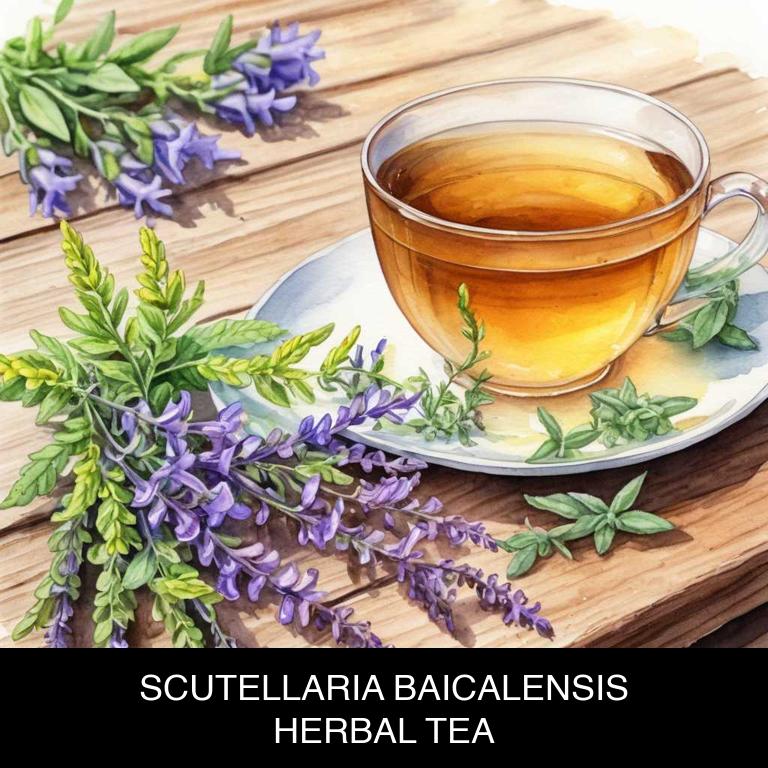
Medicinal Constituents
The list below shows the primary medicinal constituents in Scutellaria baicalensis teas that help with eye twitching.
- Baicalein: It's a flavonoid that helps alleviate eye twitching by reducing inflammation and oxidative stress in the eye muscles, thereby relaxing them and preventing spasms.
- Baicalin: This flavonoid glycoside has anti-inflammatory and antioxidant properties that help soothe the eye muscles, reducing twitching and spasms caused by irritation or stress.
- Wogonoside: A flavonoid glycoside, wogonoside has a sedative effect that helps calm the eye muscles, reducing twitching and spasms by promoting relaxation and reducing inflammation.
Parts Used
The list below shows the primary parts of skullcap used to make teas for eye twitching.
- Leaves: The leaves are used to make teas due to their high content of baicalein, a flavonoid that has been shown to have anti-inflammatory properties, which can help alleviate eye twitching.
- Roots: The roots are used to make teas due to their high content of baicalin, a flavonoid that has been shown to have anti-inflammatory and anti-anxiety effects, which can help alleviate eye twitching.
- Flowers: The flowers are used to make teas due to their high content of flavonoids, which have been shown to have anti-inflammatory and antioxidant effects, that can help alleviate eye twitching.
Quick Recipe
The following recipe gives a procedure to make a basic skullcap for eye twitching.
- Harvest 30-60 grams of dried scutellaria baicalensis roots according to your needs and the desired strength.
- Rinse the dried roots with cold water to remove any impurities and dust.
- Steep 1-2 teaspoons of the dried roots in 8 ounces of boiling water for 5-10 minutes.
- Strain the tea through a fine-mesh sieve or cheesecloth to remove any remaining plant material.
- Serve the herbal tea hot or cold depending on your preference and the desired effect.
10. Oenothera biennis
Oenothera biennis, also known as evening primrose, teas helps with eye twitching because it contains gamma-linolenic acid (GLA) and other essential fatty acids that promote relaxation and reduce inflammation.
The anti-inflammatory properties of evening primrose tea soothe the muscles around the eyes, calming spasms and twitching. Additionally, the tea's calming effects on the nervous system may help alleviate stress and anxiety, common triggers for eye twitching.
This natural remedy may provide relief from eye twitching and promote overall eye health.
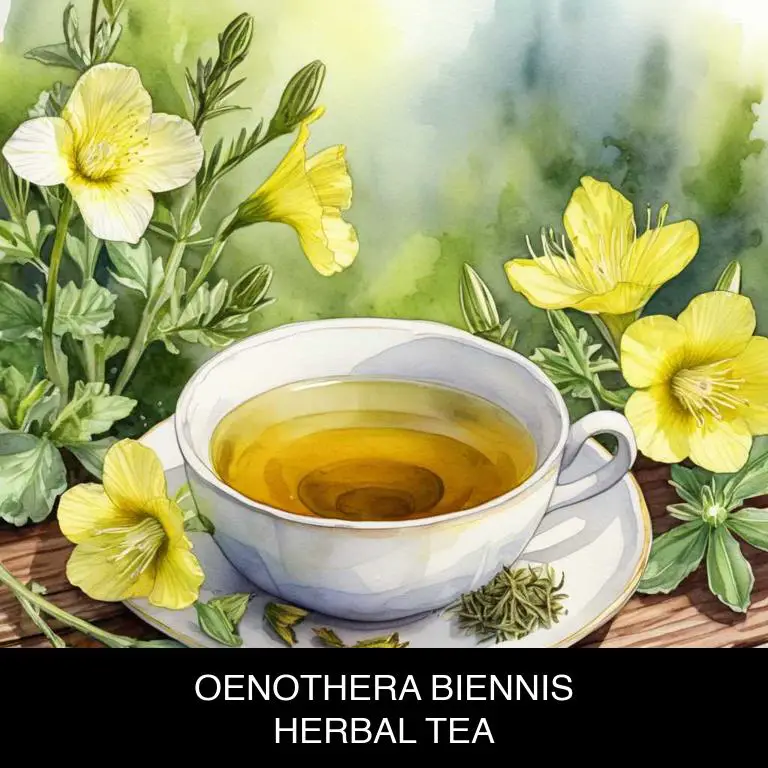
Medicinal Constituents
The list below shows the primary medicinal constituents in Oenothera biennis teas that help with eye twitching.
- Hesperidin: Hesperidin is a flavonoid glycoside that helps with eye twitching by reducing inflammation and improving blood vessel function, thereby alleviating spasms in the eye muscles.
- Rutin: Rutin is a flavonoid glycoside that helps with eye twitching by acting as a potent antioxidant and anti-inflammatory agent, which helps to reduce oxidative stress and inflammation in the eye tissues, leading to relaxation of eye muscles.
- Quercetin: Quercetin is a flavonoid that helps with eye twitching by inhibiting histamine release and reducing inflammation, which helps to alleviate eye twitching symptoms caused by allergic reactions or other inflammatory conditions.
Parts Used
The list below shows the primary parts of evening primrose used to make teas for eye twitching.
- Leaves: The leaves of Oenothera biennis are used to make teas as they contain volatile oils that are believed to have a soothing effect on the eyes.
- Flowers: The flowers of the plant are used to make teas due to their antispasmodic properties, which help to calm the muscles around the eyes and alleviate twitching.
- Roots: The roots of Oenothera biennis are used in teas for their sedative properties, which can help to relax the eyes and surrounding muscles, thereby reducing twitching.
Quick Recipe
The following recipe gives a procedure to make a basic evening primrose for eye twitching.
- Harvest 20-30 dried flower heads of oenothera biennis in the morning after the dew has evaporated.
- Dry the harvested flowers in a low-temperature oven at 150f for 2 hours to preserve the herbs.
- Steep 1 teaspoon of dried oenothera biennis flower heads in 8 oz of boiling water for 5-7 minutes.
- Strain the tea using a fine-mesh sieve or cheesecloth to remove the solids from the liquid.
- Store the tea in airtight containers in the refrigerator for up to 3 days to maintain freshness.
What is the best combination of herbal teas to use for eye twitching?
The best combination of herbal teas that help with eye twitching is a blend of chamomile, peppermint, and passionflower.
Chamomile soothes and calms the eyes, while peppermint cools and reduces inflammation. Passionflower, with its sedative properties, helps to relax the eyelid muscles, alleviating twitching. Drinking a warm infusion of these herbs can help to reduce stress and promote overall eye health, providing relief from annoying and persistent eye twitching.
Regular consumption may help to prevent future occurrences.
What ailments similar to eye twitching are treated with herbal teas?
Ailments similar to eye twitching that are treated with herbal teas are various nervous system disorders, such as anxiety, insomnia, and stress-related conditions.
Herbal teas like chamomile, lavender, and valerian root have been traditionally used to calm the mind and body, reducing symptoms of restlessness and jitteriness. Other herbal remedies, like passionflower and lemon balm, may help soothe irritability and promote relaxation.
These teas can be consumed hot or cold, depending on personal preference, and are often recommended as a natural and gentle treatment option.